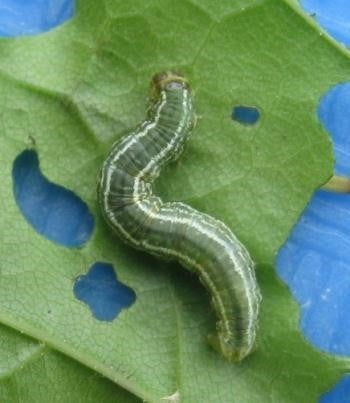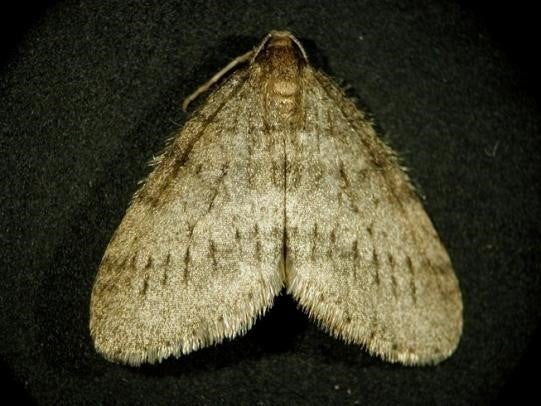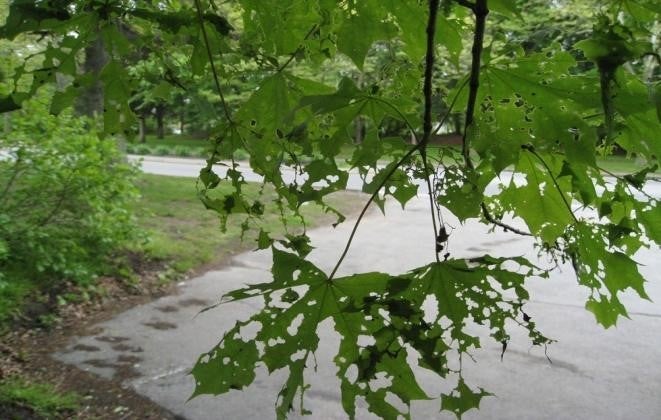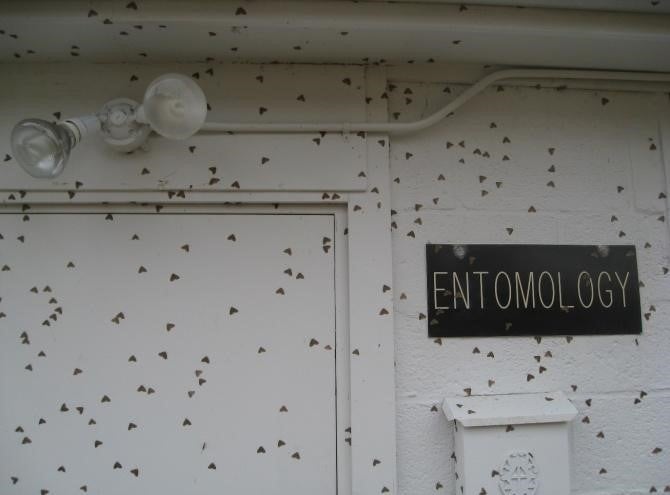Over recent years, Rhode Island has seen increasingly more issues with Operophtera brumata, commonly known as the winter moth, an invasive species spreading across the United States and Canada. The name “winter moth” originates from the activity period of adult male moths, which spans from late November to early December. These moths belong to the family Geometridae; thus their larvae may be referred to as “inchworms.” The winter moth was first introduced in Nova Scotia, Canada, from Europe in the 1950s, and spread to Massachusetts in the late 1990s. Today winter moths have spread across New England and into parts of Northern America. As larvae, winter moth feed on oaks, maples, basswoods, white elms, crabapples, apples, blueberries, and cherry trees.
Damage by winter moth has become severe in Rhode Island and neighboring states. Young larvae feed inside the buds of their host trees, especially the flower buds of fruit trees, which damages new growth; older larvae feed off the leaves of the host plant. The larvae move from one bud or leaf to another and have the potential to completely defoliate trees and damage fruit crops.In comparison to males, female moths do not fly, but walk on tree trunks and attract males. Eggs are laid on tree bark in crevices of tree trunks.
Cyzenis albicans, a parasitoid fly that preys on the winter moth caterpillar, has been released at 7 sites in RI, MA, and CT to serve as a biological control agent. At URI this parasitoid is being monitored by Heather Faubert, Plant Clinic Director and agricultural extension agent.C. albicans lay their eggs on leaves, and caterpillars consume them. Then the eggs hatch inside the caterpillar, ultimately killing it, and the larval C. albicans fly continues its development. Establishment of these flies have been successful in both Nova Scotia and British Columbia, and more recently, in parts of Massachusetts where they were introduced by the University of Massachusetts.




